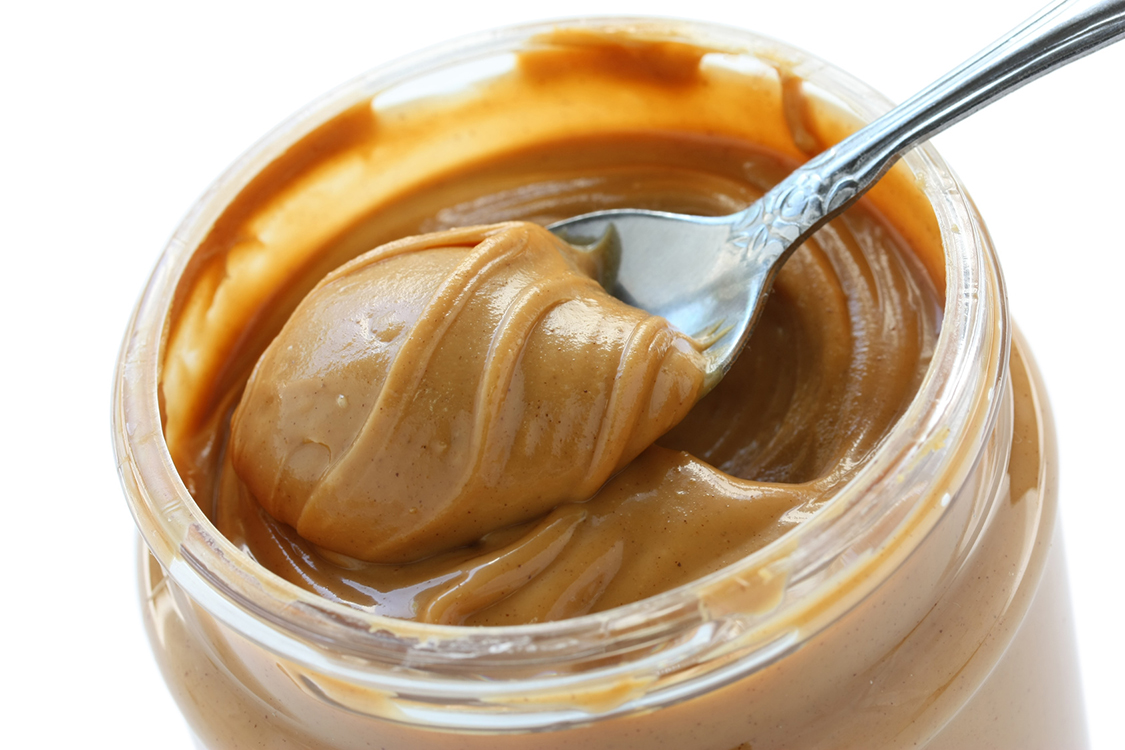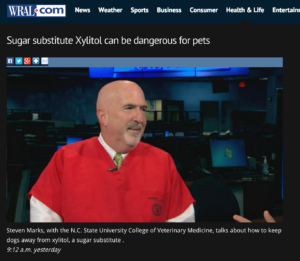Xylitol Toxicity in Dogs: The Peanut Butter Danger

The artificial sweetener xylitol (ZI-luh-tohl) commonly found in sugarless gum, candy, and some baked goods is toxic to dogs and its consumption can result in undesired symptoms ranging from mild hypoglycemia to liver failure and death.

A naturally occurring sugar alcohol in plants, commercial xylitol is derived from birch trees. Xylitol is extracted into a white powder that looks and tastes similar to sugar. It is not harmful to people, save for mild diarrhea or intestinal discomfort when consumed in large amounts. The sugar substitute can be helpful to diabetics and those who wish to chew gum but have issues or concerns with cavities.
While the dangers for dogs of xylitol-containing gum, candy, cookies, and other human treats have been understood by veterinarians and owners, these are not items that are commonly fed to a dog. Several manufacturers, however, have recently begun producing peanut butter brands that contain xylitol. This is disconcerting for pet owners as peanut butter is commonly used to disguise oral medications when pets are reluctant to take pills. The brand names of peanut butter reported to contain xylitol include: Go Nuts, Hank’s Protein Plus Peanut Butter, Krush Nutrition, Nuts ‘n More, and P28.
“Xylitol is toxic to dogs because once consumed it stimulates the pancreas to release insulin,” says Korinn Saker, associate professor of nutrition at North Carolina State University’s College of Veterinary Medicine. “The surge of insulin into the dog’s bloodstream causes hypoglycemia—a profound drop in blood sugar levels that in turn results in weakness, disorientation, tremors, and potentially seizures.”
A dog need only consume a few sticks of xylitol-containing gum or a little bit of peanut butter to elicit signs of toxicity, according to Dr. Saker. Small dogs are more in danger than larger dogs. Symptoms of poisoning—vomiting—may begin as quickly as 30 minutes after consumption and progress to lethargy, loss of appetite, diarrhea, incoordination, collapse, and seizures. In some instances, xylitol may be absorbed more slowly and symptoms may not appear for hours.

The ASPCA Animal Poison Control Center says xylitol poisoning in dogs has more than doubled since 2007 when reports were first tracked. More than 3,725 calls were received last year and ASPCA officials believe that number may under estimate actual incidents now that veterinarians are aware of xylitol effects on pets.
“If you suspect your pet has eaten a product containing xylitol, immediately contact your veterinarian or the Pet Poison Helpline [800-213-6680],” says Dr. Saker. “Quick treatment by your veterinarian can save your pet’s life. Do not attempt to treat your pet yourself unless specifically instructed by your veterinarian. Incorrect home treatment may make the outcome more dangerous for your pet.”
What’s in a name?
The ASPCA Animal Poison Control Center recommends being on the lookout for any ingredient that includes the letters “xyl.” Synonyms for xylitol:
- 1,4-anhydro-d-xylitol
- Anhydroxylitol
- birch bark extract
- birch sugar
- d-xylitol
- xylite
- xylitylglucoside
- Zylatol
Products containing xylitol
The website Preventative Vet contains links to a long list of products that contain various levels of xylitol. While the amount in shampoo—human or pet product—is not dangerous, some food sources may be deadly. In addition to gum, candies, baked goods, ice cream, and peanut butter xylitol may be found in certain toothpaste, mouthwash, jams and jellies, power drinks, condiments, cosmetics, face cream, and hair care products.
http://www.preventivevet.com/xylitol-products-toxic-for-dogs
- Categories:


